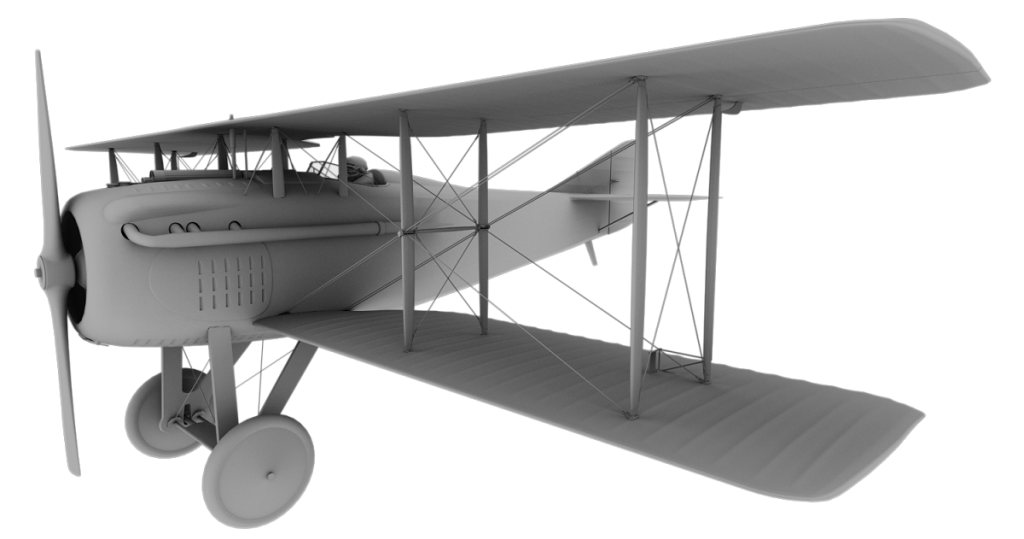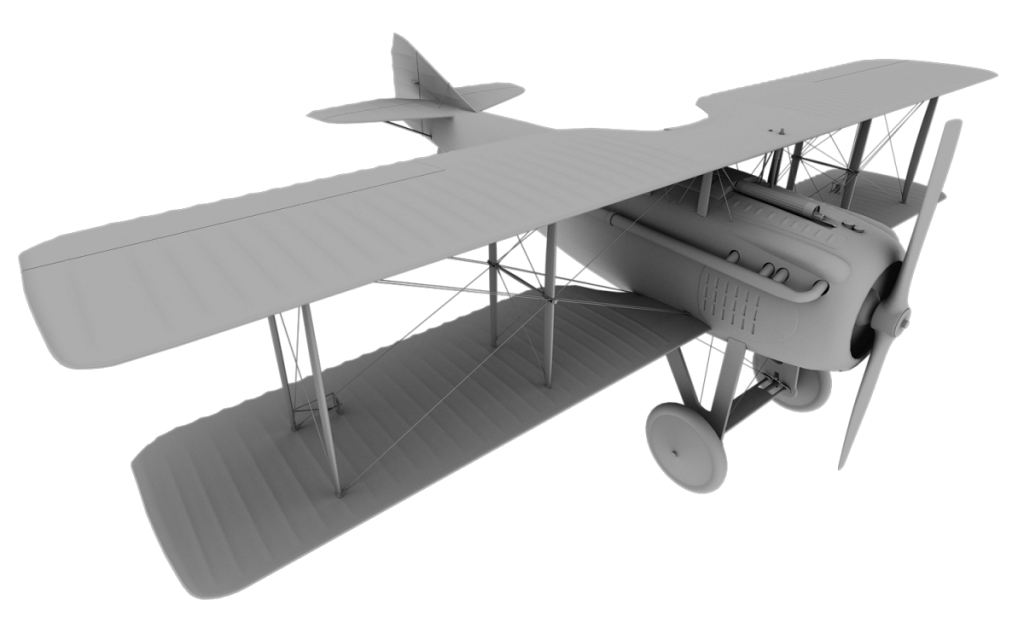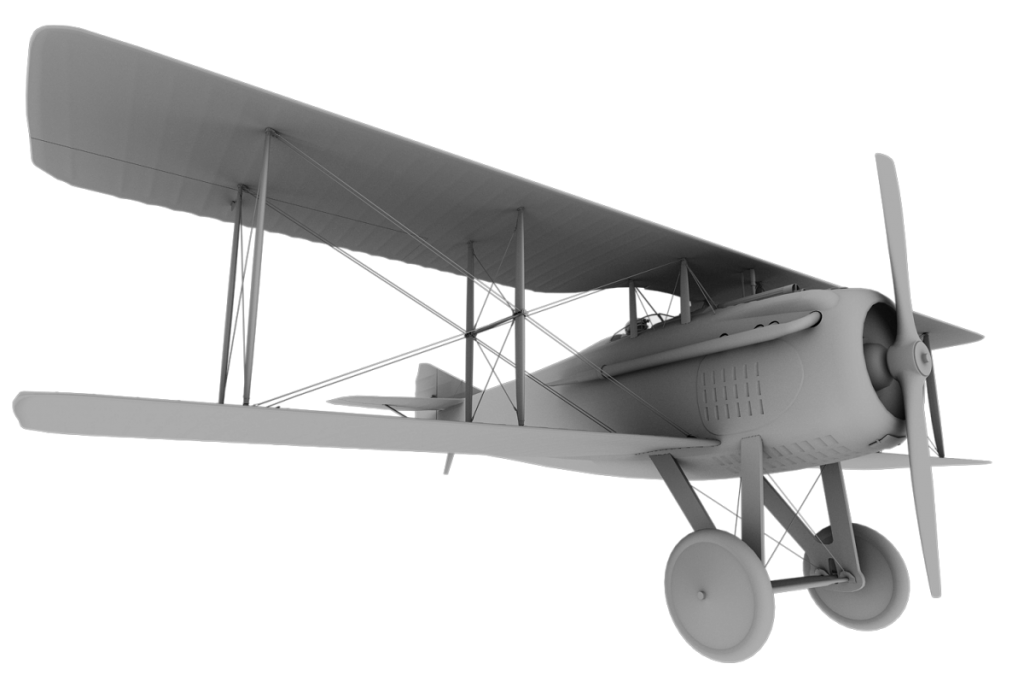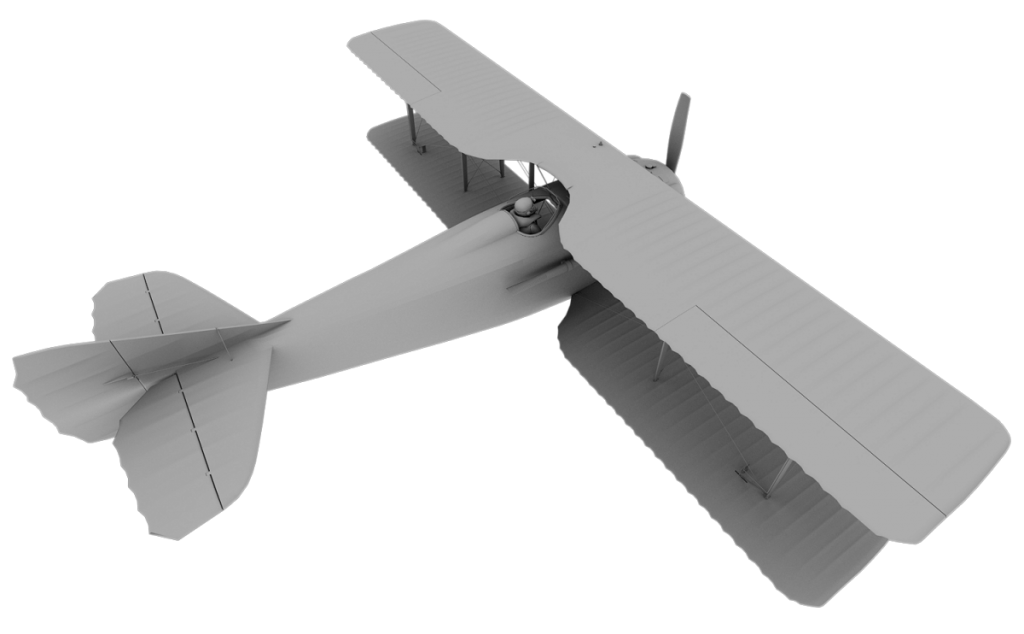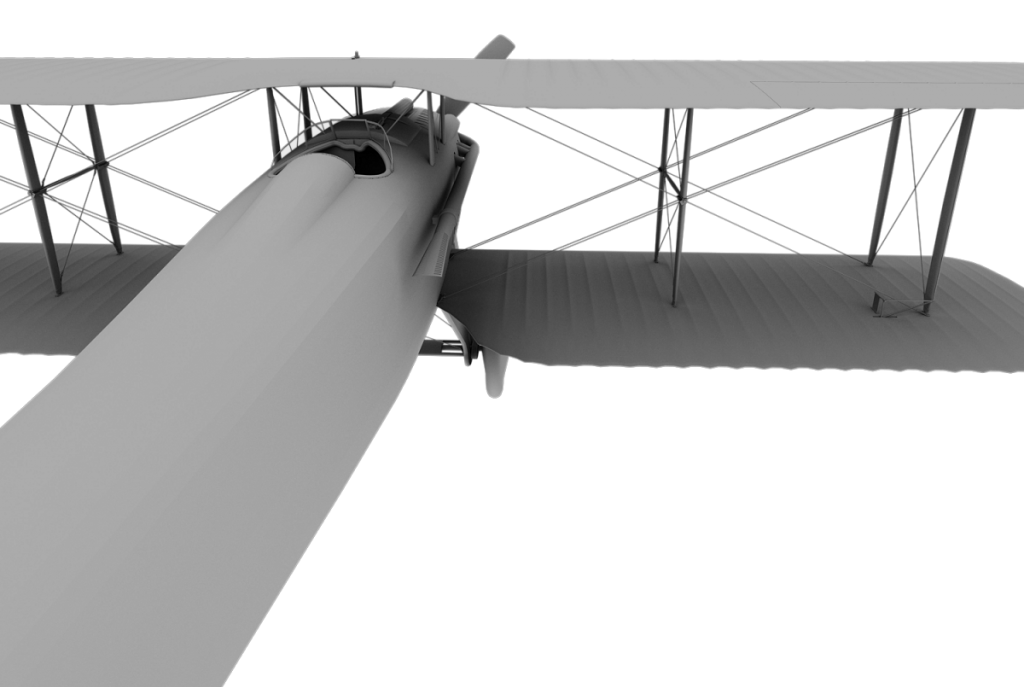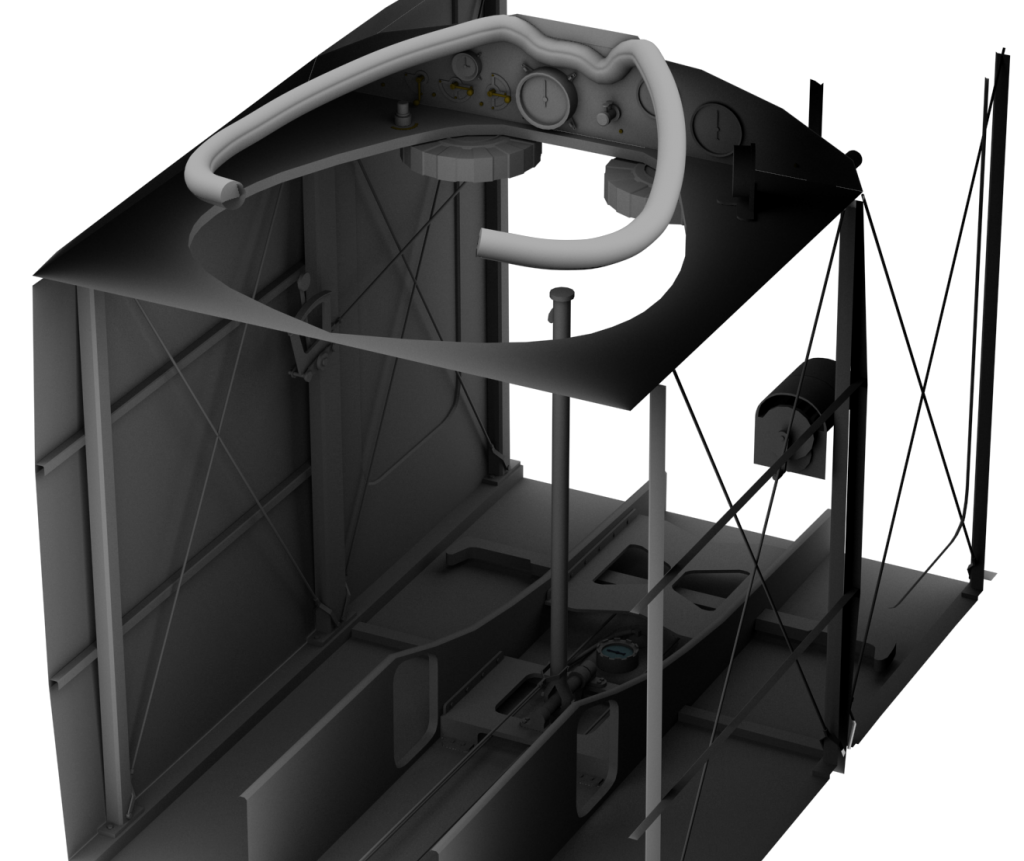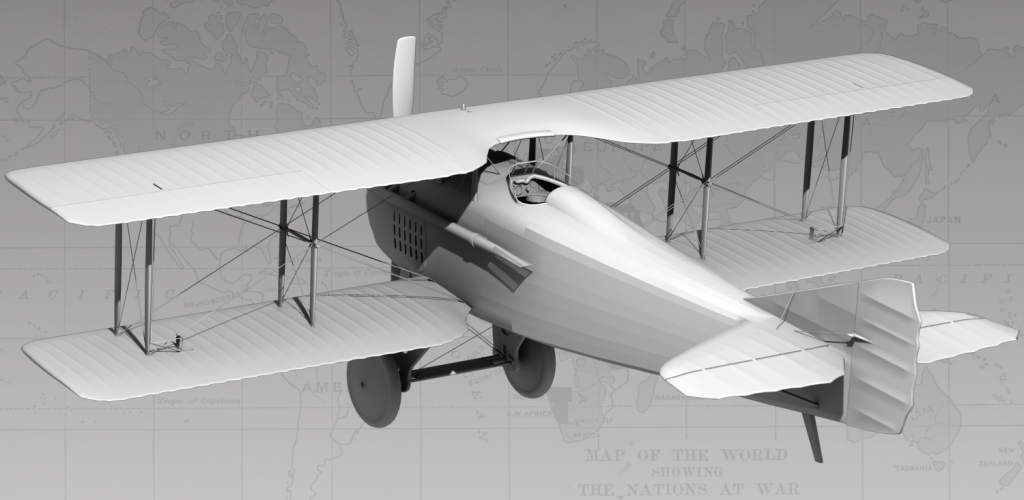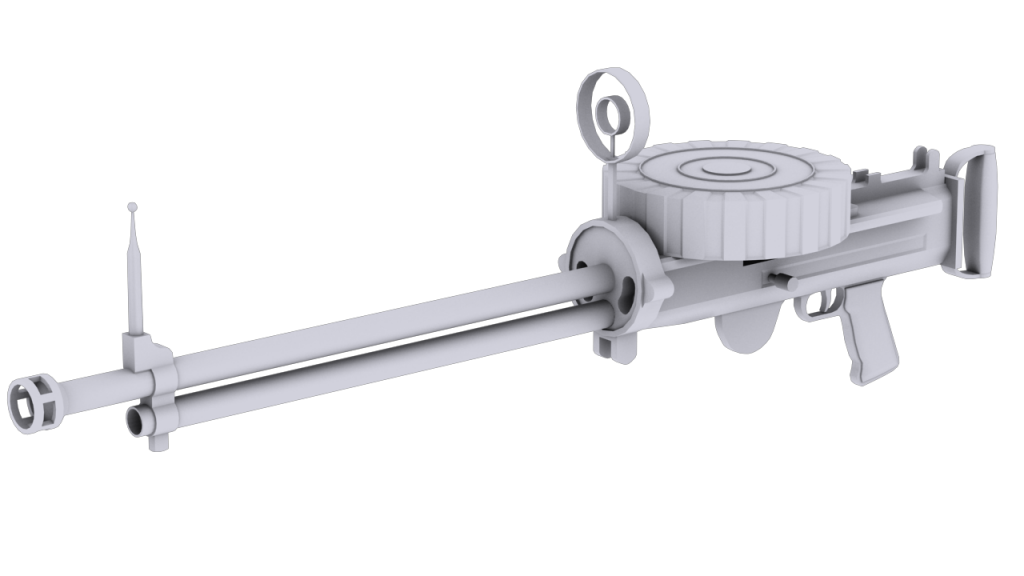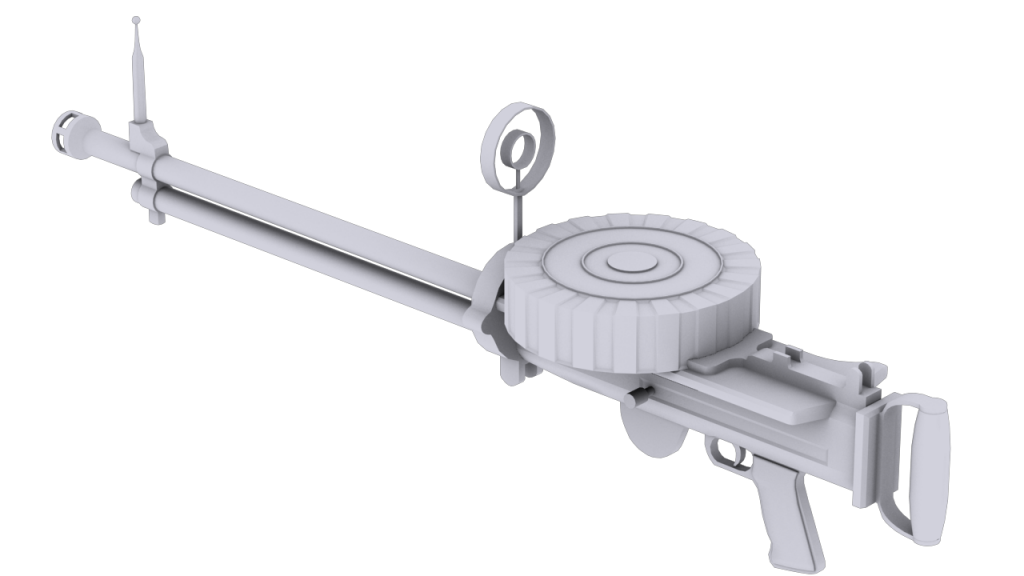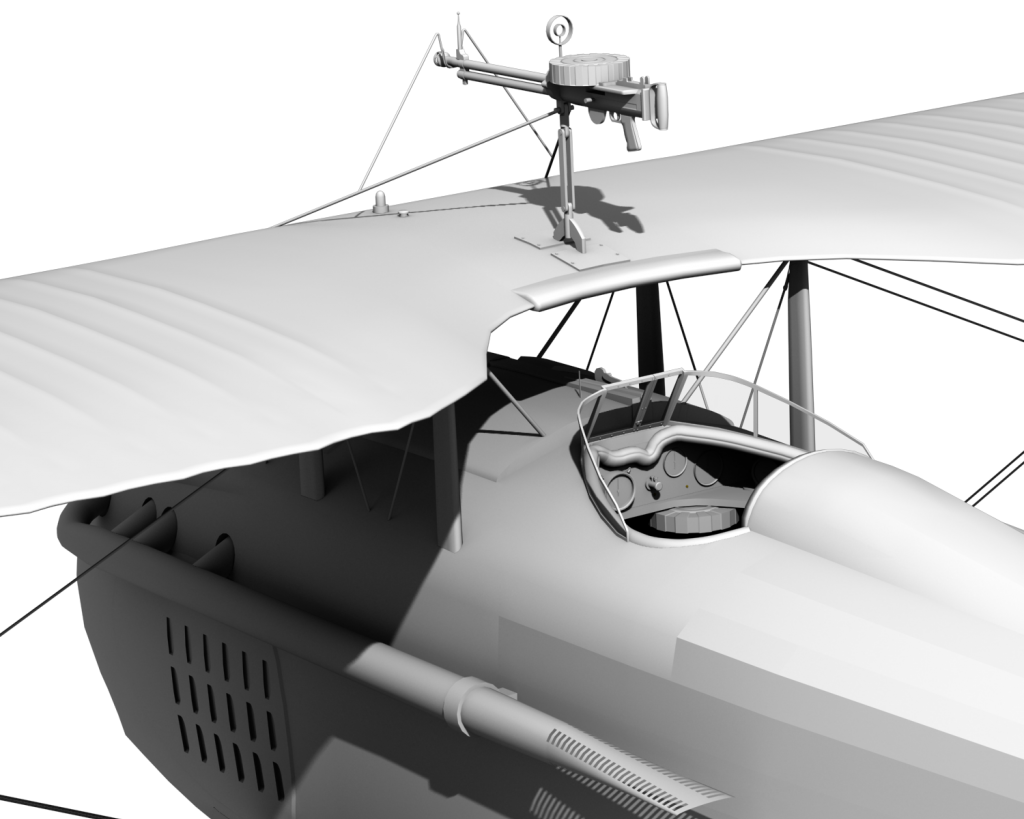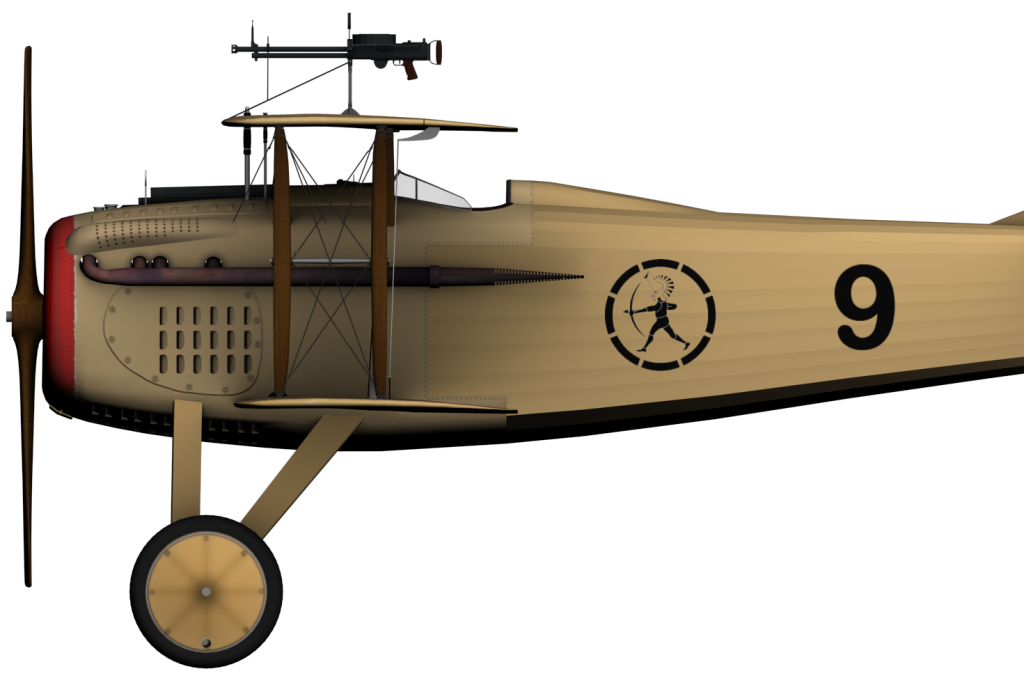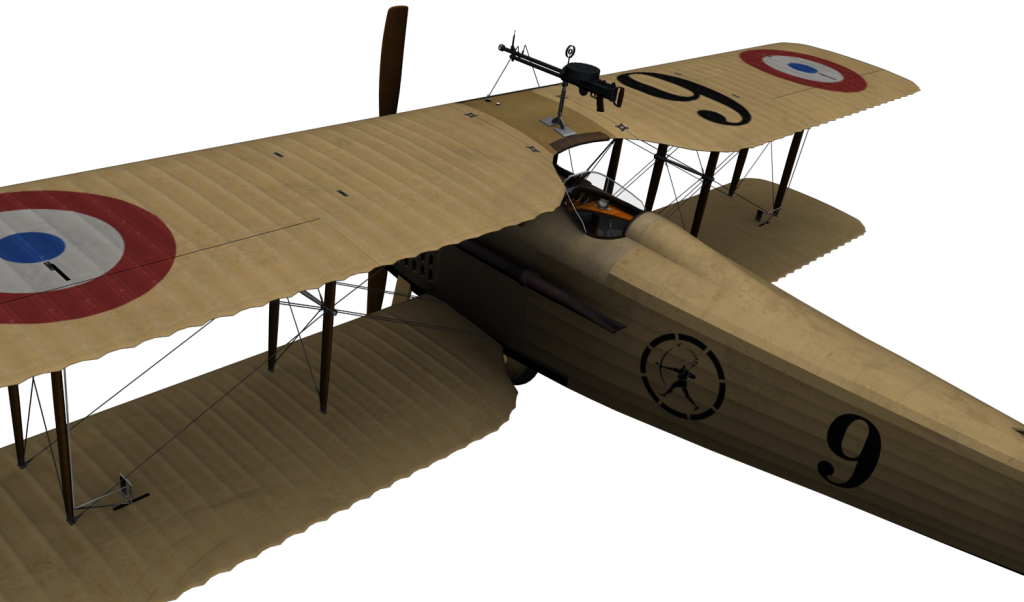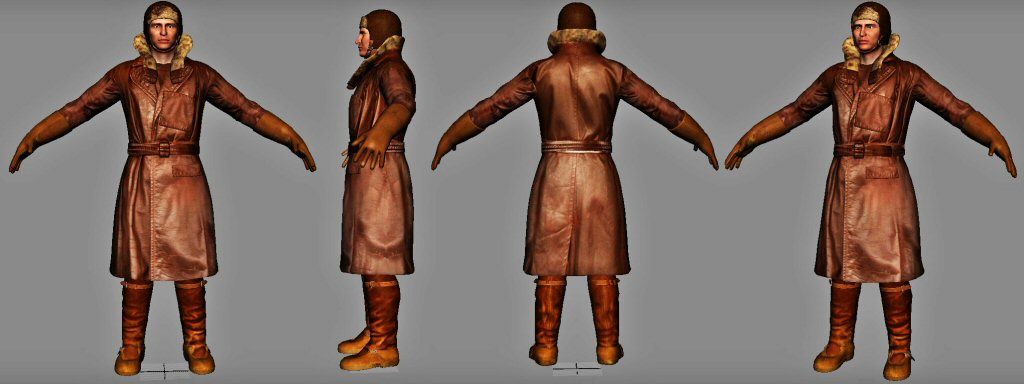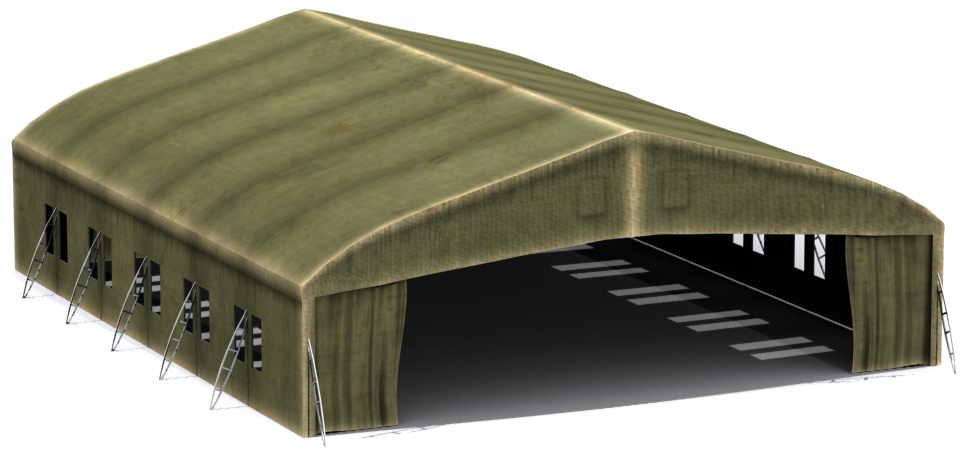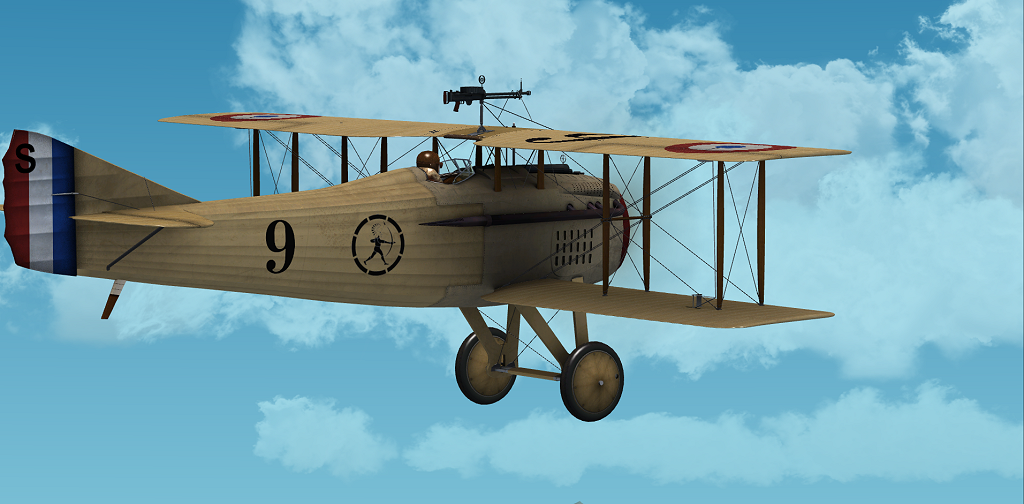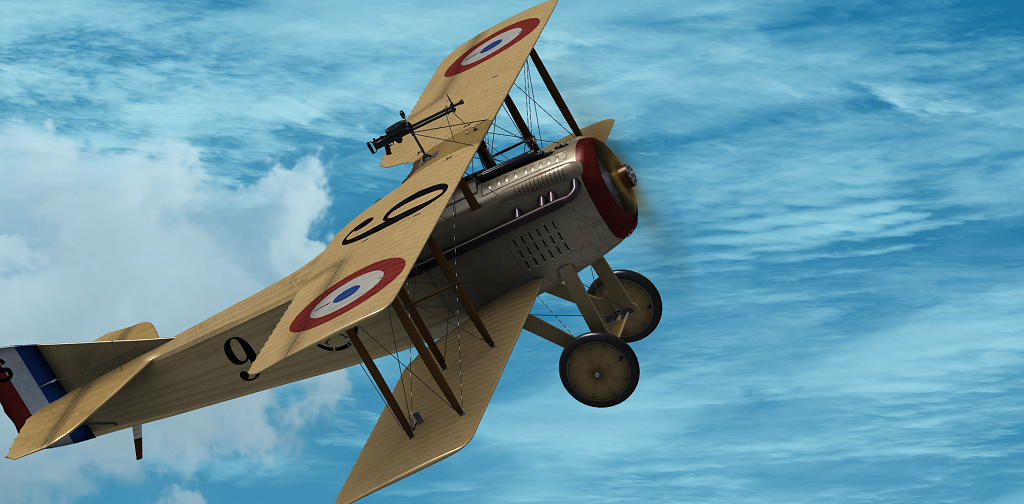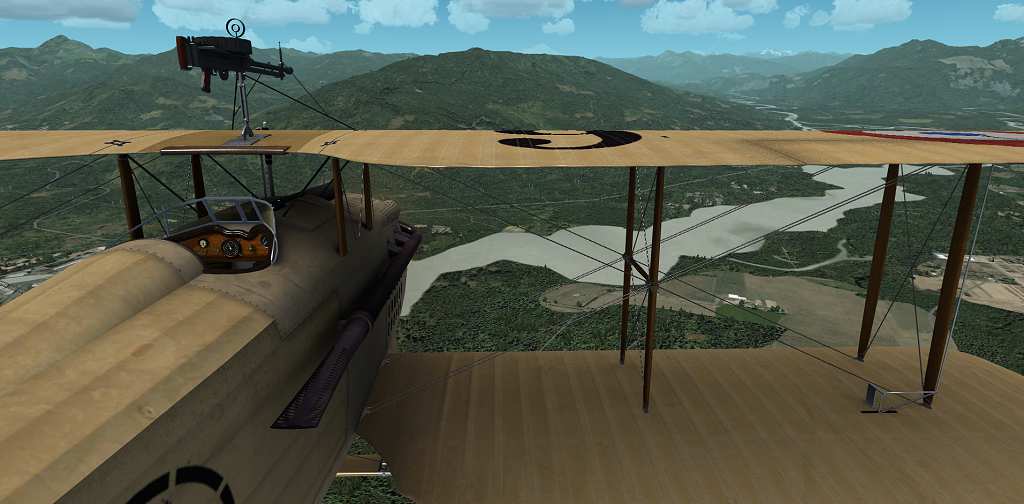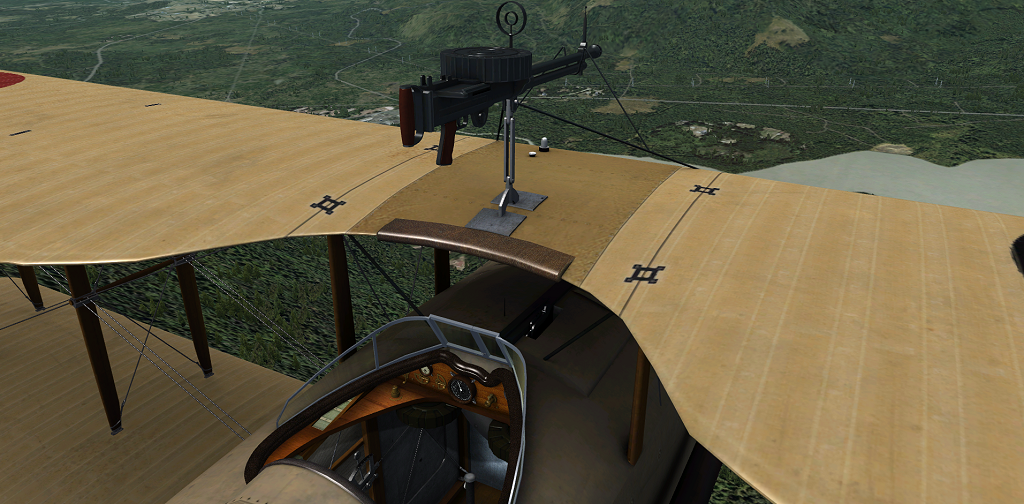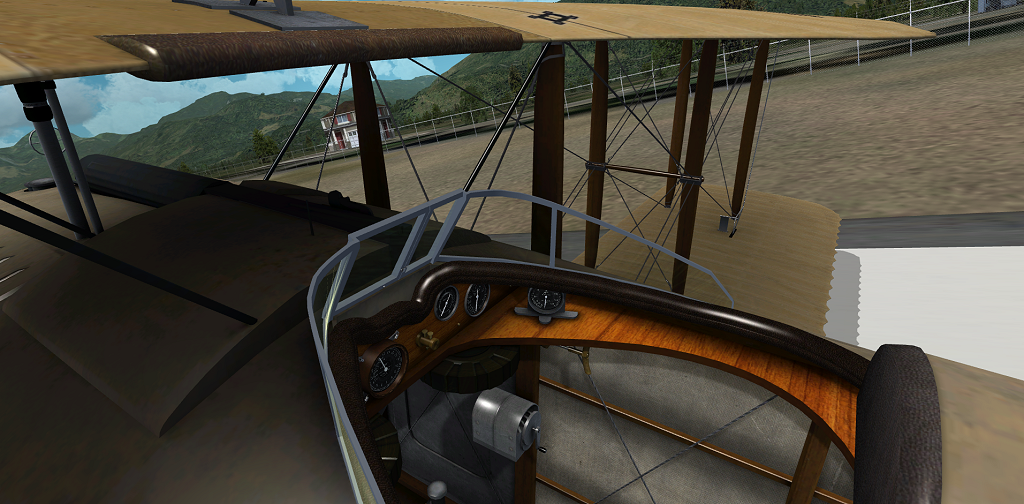trucker17
Charter Member
First a little history on the SPAD.
Taken from the Development page at VS.
Spad VII Developer Diary
Taken from the Development page at VS.
Spad VII Developer Diary
The SPAD S.VII was the first of a series of highly successful biplane fighter aircraft produced by Société Pour L'Aviation et ses Dérivés (SPAD) during the First World War. Like its successors, the S.VII was renowned as a sturdy and rugged aircraft with good climbing and diving characteristics. It was also a stable gun platform, although pilots used to the more manoeuvrable Nieuport fighters found it heavy on the controls. It was flown by a number of the famous aces, such as France's Georges Guynemer, Italy's Francesco Baracca and Australia's Alexander Pentland.
The French Aviation Militaire had been sufficiently impressed by the performance of the SPAD V prototype to order a batch of 268 aircraft on 10 May 1916. However, teething problems soon appeared and it would be several months before the SPAD VII would serve in significant numbers on the front, the last aircraft of the initial batch being delivered in February 1917.
In spite of these delays, some aircraft were delivered to frontline units as early as August 1916, to complement to Nieuport fighters. At this date, Allied designs such as the Nieuport 11 /17 and D.H.2 had been able to regain air superiority after the infamous "Fokker scourge" episode but, by the second half of 1916, new types of more powerful German fighters threatened to give Germany mastery of the skies again. In this context, it was hoped the new SPAD VII would be able to fight the modern German fighters on equal terms. The first aircraft delivered to a frontline unit was S.112 flown by Lt Sauvage of N.65, followed by S.113, assigned to Georges Guynemer of N.3. Guynemer was already credited with 15 victories at the time, but it was Armand Pinsard of N.26 who was the first to score an aerial victory on 26 August, flying S.122.
The initial introduction of the SPAD VII was therefore not enough to change the balance of the air war but it allowed both pilots and mechanics to familiarize themselves with the new fighter. Quite a few pilots thought the SPAD lacked maneuverability and some even reverted to the nimble Nieuports they were accustomed to while waiting for the aircraft to become more reliable, but most were quick to realize its combat potential. René Fonck, France's leading ace of World War I with 75 victories, said of the introduction of the SPAD that "it completely changed the face of aerial warfare." New tactics based primarily on speed were developed to take advantage of the SPAD's power, and to compensate for its relative lack of maneuverability.
The aircraft's capacity to dive safely up to 400 km/h (249 mph) was a superb advantage that permitted to leave combat rapidly without fear of pursuit if the situation demanded it.
With early problems solved and production shared between several manufacturers, the SPAD VII finally began appearing in large numbers at the front in early 1917. By mid 1917, some 500 SPADs were in front-line service, having almost completely replaced the Nieuport. The aircraft was a solid performer in combat and could cope with most of its opponents. It also acquired a reputation of being capable of absorbing far more damage than its flimsier predecessors. Its principal shortcoming was its one machine gun armament at a time when most opposition fighters were equipped with two.
The SPAD VII was gradually replaced by the improved SPAD XIII in front line units but remained an important asset of the Aviation Militaire throughout the war, being latterly used as a trainer aircraft. It was also used as the standard pilot certificate test aircraft until 1928.
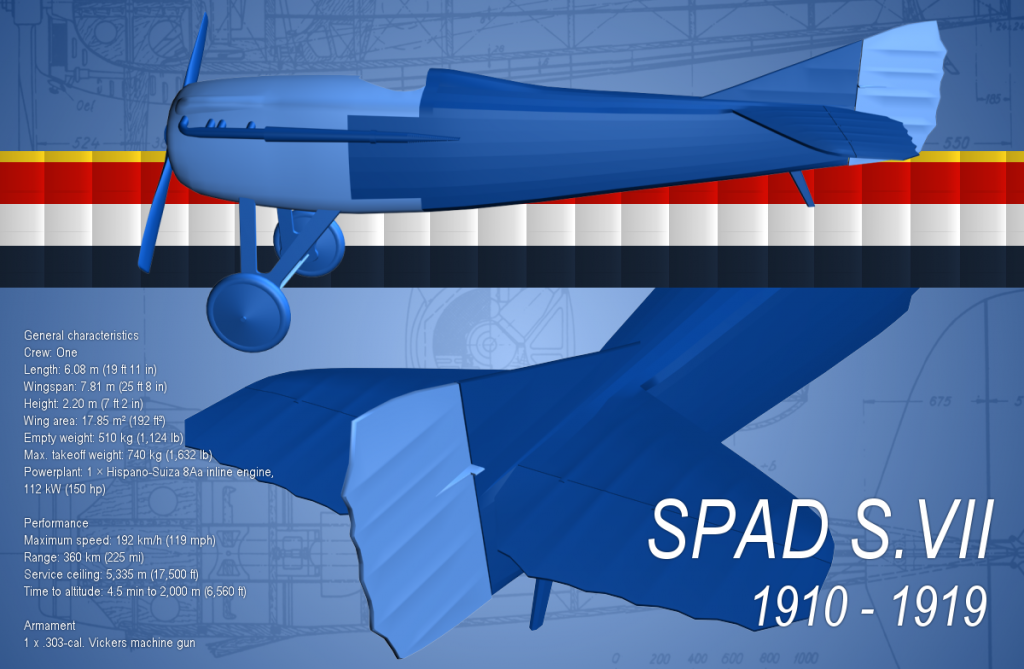
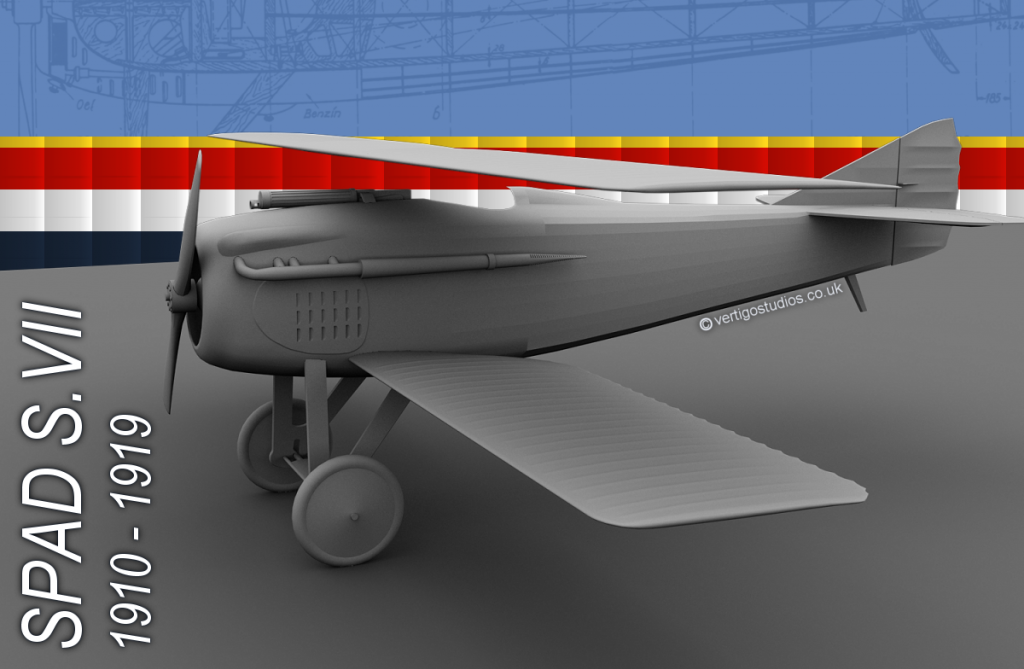
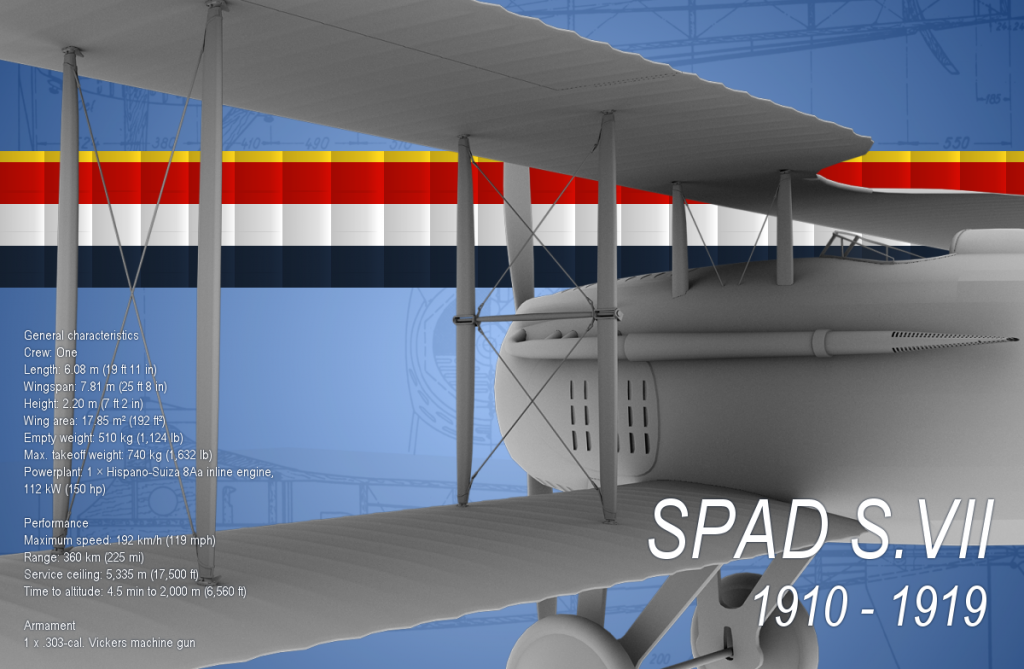

The French Aviation Militaire had been sufficiently impressed by the performance of the SPAD V prototype to order a batch of 268 aircraft on 10 May 1916. However, teething problems soon appeared and it would be several months before the SPAD VII would serve in significant numbers on the front, the last aircraft of the initial batch being delivered in February 1917.
In spite of these delays, some aircraft were delivered to frontline units as early as August 1916, to complement to Nieuport fighters. At this date, Allied designs such as the Nieuport 11 /17 and D.H.2 had been able to regain air superiority after the infamous "Fokker scourge" episode but, by the second half of 1916, new types of more powerful German fighters threatened to give Germany mastery of the skies again. In this context, it was hoped the new SPAD VII would be able to fight the modern German fighters on equal terms. The first aircraft delivered to a frontline unit was S.112 flown by Lt Sauvage of N.65, followed by S.113, assigned to Georges Guynemer of N.3. Guynemer was already credited with 15 victories at the time, but it was Armand Pinsard of N.26 who was the first to score an aerial victory on 26 August, flying S.122.
The initial introduction of the SPAD VII was therefore not enough to change the balance of the air war but it allowed both pilots and mechanics to familiarize themselves with the new fighter. Quite a few pilots thought the SPAD lacked maneuverability and some even reverted to the nimble Nieuports they were accustomed to while waiting for the aircraft to become more reliable, but most were quick to realize its combat potential. René Fonck, France's leading ace of World War I with 75 victories, said of the introduction of the SPAD that "it completely changed the face of aerial warfare." New tactics based primarily on speed were developed to take advantage of the SPAD's power, and to compensate for its relative lack of maneuverability.
The aircraft's capacity to dive safely up to 400 km/h (249 mph) was a superb advantage that permitted to leave combat rapidly without fear of pursuit if the situation demanded it.
With early problems solved and production shared between several manufacturers, the SPAD VII finally began appearing in large numbers at the front in early 1917. By mid 1917, some 500 SPADs were in front-line service, having almost completely replaced the Nieuport. The aircraft was a solid performer in combat and could cope with most of its opponents. It also acquired a reputation of being capable of absorbing far more damage than its flimsier predecessors. Its principal shortcoming was its one machine gun armament at a time when most opposition fighters were equipped with two.
The SPAD VII was gradually replaced by the improved SPAD XIII in front line units but remained an important asset of the Aviation Militaire throughout the war, being latterly used as a trainer aircraft. It was also used as the standard pilot certificate test aircraft until 1928.





